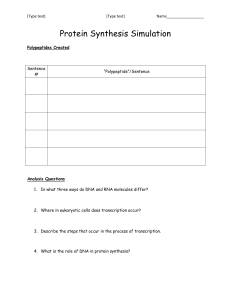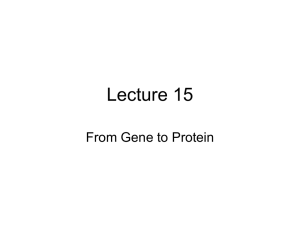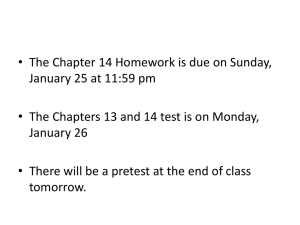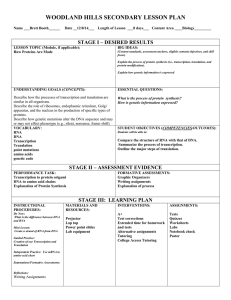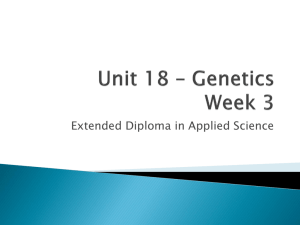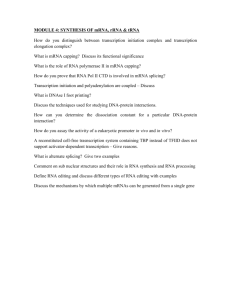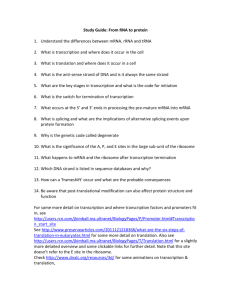Transcription and Translation Worksheet
advertisement
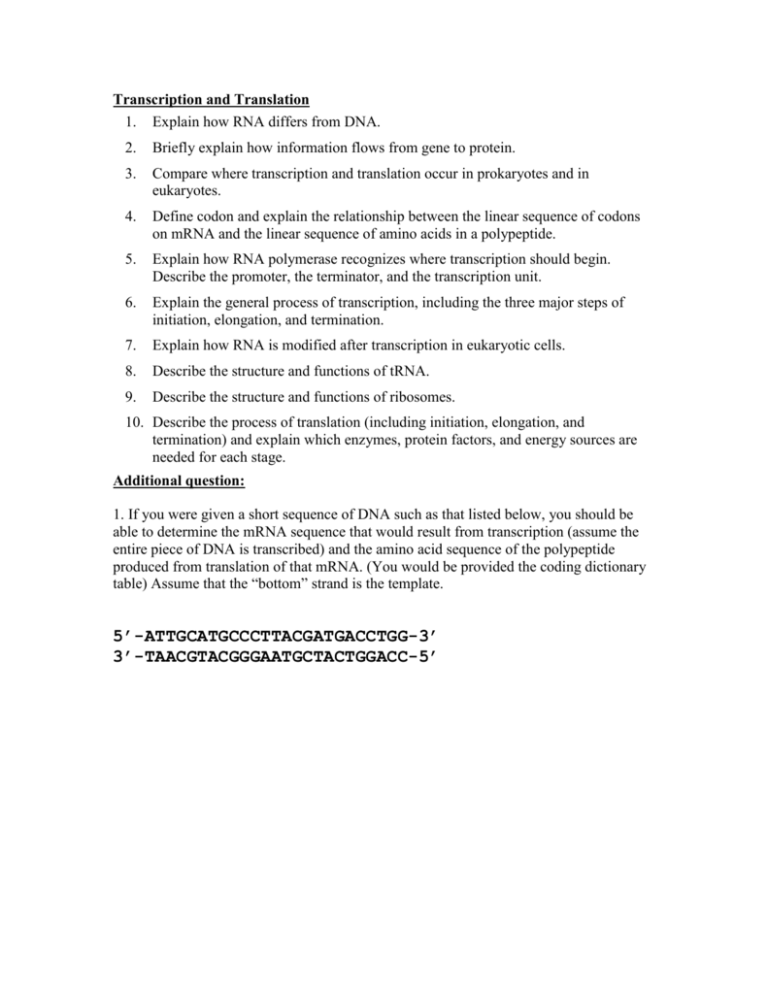
Transcription and Translation 1. Explain how RNA differs from DNA. 2. Briefly explain how information flows from gene to protein. 3. Compare where transcription and translation occur in prokaryotes and in eukaryotes. 4. Define codon and explain the relationship between the linear sequence of codons on mRNA and the linear sequence of amino acids in a polypeptide. 5. Explain how RNA polymerase recognizes where transcription should begin. Describe the promoter, the terminator, and the transcription unit. 6. Explain the general process of transcription, including the three major steps of initiation, elongation, and termination. 7. Explain how RNA is modified after transcription in eukaryotic cells. 8. Describe the structure and functions of tRNA. 9. Describe the structure and functions of ribosomes. 10. Describe the process of translation (including initiation, elongation, and termination) and explain which enzymes, protein factors, and energy sources are needed for each stage. Additional question: 1. If you were given a short sequence of DNA such as that listed below, you should be able to determine the mRNA sequence that would result from transcription (assume the entire piece of DNA is transcribed) and the amino acid sequence of the polypeptide produced from translation of that mRNA. (You would be provided the coding dictionary table) Assume that the “bottom” strand is the template. 5’-ATTGCATGCCCTTACGATGACCTGG-3’ 3’-TAACGTACGGGAATGCTACTGGACC-5’

